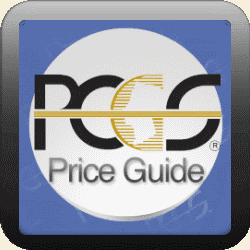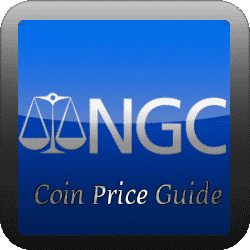Coin Prices
Type of Coin:
The first factor that significantly affects a coin’s value is its type. Coins come in various denominations and designs. Whether it’s a cent, nickel, dime, quarter, half dollar, or dollar, the type of coin sets the foundation for its potential worth. Additionally, the specific design, rarity, and historical significance of the coin can also play a pivotal role. Rare and historically significant coins often command higher prices in the market due to their collector appeal.
Date and Mint Mark:
The second crucial aspect to consider is the coin’s date of issue and mint mark, if applicable. Different years and mint locations can produce variations in coin quality and rarity. Coins with errors or unique characteristics, such as doubled dies or missing mint marks, can fetch substantial premiums from collectors. Therefore, accurately identifying the date and mint mark of a coin is fundamental to evaluating its value.
Coin Condition:
The condition of a coin is perhaps the most critical factor in determining its value. Coins can be categorized into several condition grades, with the most common being:
Fine: Coins in this condition may have significant wear, but the major design elements are still visible.
Extra Fine: These coins have minimal wear, with well-preserved design details.
Uncirculated: Uncirculated coins have never been in circulation and are in pristine condition.
Mint State (MS): Mint State coins are graded on a scale from MS60 to MS70, with MS70 being a perfect, flawless coin.
The higher the condition grade, the more valuable the coin. Collectors and investors often seek coins in the best possible condition to add to their collections, driving up the prices for coins in excellent condition.
Professional Coin Grading Service (PCGS):
When assessing a coin’s value, it’s essential to consult reputable sources and organizations that specialize in coin grading and authentication. The Professional Coin Grading Service (PCGS) is one such trusted authority in the world of numismatics. PCGS employs a team of expert graders who meticulously evaluate and grade coins. These grades play a pivotal role in determining a coin’s market value. Coins graded by PCGS are highly regarded in the industry and often command a premium in the market.
Numismatic Guaranty Corporation (NGC):
In addition to PCGS, the Numismatic Guaranty Corporation (NGC) is another renowned organization that offers grading and certification services. NGC utilizes a similar grading system to assess a coin’s condition, providing collectors and investors with a reliable assessment of a coin’s quality and authenticity. Coins encapsulated and certified by NGC are highly sought after and can enhance a coin’s market value.
Online Resources:
Fortunately, in the digital age, numismatists have access to a wealth of online resources to aid in their coin research. PCGS, for instance, provides an online platform where individuals can compare their coins to images and descriptions of similar coins. This feature is invaluable for those who are unsure about their coin’s condition or authenticity. By finding a match, collectors can gain a clearer understanding of their coin’s grade and potential value.
Market Trends and Demand:
The value of coins is not static; it fluctuates based on market trends and collector demand. Coins that are currently in high demand or part of a popular collecting series may see their values rise. On the other hand, market saturation or changes in collector preferences can impact coin values negatively. Staying informed about market trends and the evolving landscape of numismatics is crucial for making informed decisions about buying, selling, or holding coins.
Rarity and Uniqueness:
Rarity and uniqueness are attributes that can significantly enhance a coin’s value. Coins with limited mintage, historical significance, or unusual characteristics are often prized by collectors. Rare coins that are difficult to acquire become coveted treasures, and their scarcity can drive up their market value. Numismatists often look for coins with unique features, such as errors or die varieties, as these can fetch premium prices due to their distinctiveness.
Historical Significance:
Coins that hold historical importance can also be highly valuable. Whether it’s a coin from a particular era, a commemorative issue, or a coin with a connection to a significant historical event, these pieces can captivate the interest of collectors and investors alike. Historical context can add depth and meaning to a coin, increasing its desirability and price.
Provenance and Pedigree:
The history and ownership of a coin, known as its provenance, can impact its value. Coins with documented and prestigious pedigrees, indicating previous ownership by notable collectors or inclusion in important coin collections, often command higher prices. A well-documented lineage can enhance a coin’s appeal and contribute to its overall worth.
Numismatic Literature and Catalogs:
Numismatic literature and catalogs play a vital role in the world of coin collecting. Catalogs, such as the Red Book for U.S. coins, provide detailed information about coin types, mintages, historical background, and estimated values. These resources are invaluable for collectors and investors looking to research and understand the coins they own or wish to acquire. Staying well-informed about numismatic literature and reference materials can aid in making informed decisions.
Grading Standards and Terminology:
Grading standards and terminology used in the numismatic industry are essential for accurately assessing a coin’s condition and value. It’s crucial to understand the grading scale and associated terms, such as “AU” (Almost Uncirculated), “XF” (Extra Fine), “BU” (Brilliant Uncirculated), and various Mint State grades. Familiarizing yourself with these standards will enable you to communicate effectively with other collectors, dealers, and grading services.
Coin Storage and Preservation:
Proper storage and preservation are essential for maintaining a coin’s condition and value. Coins should be kept in a controlled environment, away from extreme temperature fluctuations, moisture, and contaminants. Additionally, handling coins with care, using soft gloves or coin holders, prevents the transfer of oils and dirt, which can affect a coin’s surface. By preserving the quality of a coin, you can maximize its long-term value.
Authentication and Counterfeit Detection:
Ensuring the authenticity of a coin is a critical step in the evaluation process. Counterfeit coins exist in the market, and it’s essential to be vigilant in detecting fakes. Reputable grading services like PCGS and NGC offer authentication services to verify a coin’s legitimacy. Collectors should also educate themselves on the common methods used to counterfeit coins and employ counterfeit detection techniques when acquiring new pieces.
Coin Markets and Investment Strategies:
The coin market encompasses various segments, including rare coins, bullion coins, and modern issues. Each market has its unique dynamics, and investors and collectors often adopt different strategies based on their goals. Some individuals may focus on acquiring historically significant coins as long-term investments, while others may trade in bullion coins as a store of value. Understanding the different coin markets and developing a clear investment strategy is essential for those seeking to grow their numismatic portfolio.
Resources for Coin Collectors:
Coin collectors can benefit from joining numismatic organizations, attending coin shows and auctions, and networking with experienced collectors and dealers. These activities provide opportunities to learn from experts, discover new coins, and stay updated on the latest developments in the coin collecting community. Use the resources below to get started.




